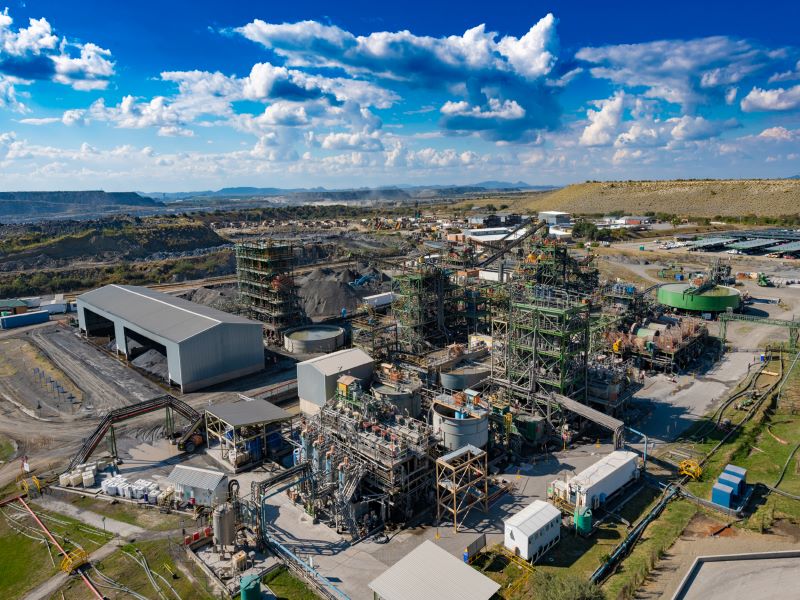
The U.S. Environmental Protection Agency (EPA) has announced that it will revisit several environmental and climate regulations, citing concerns that they are burdensome and costly. This decision, made on March 12, marks what the agency refers to as “the greatest and most consequential day of deregulation in the history of the United States.” The changes are expected to have far-reaching impacts across various industries, including waste and recycling, as well as steel and aluminum production.
Deregulation in Key Industries: Steel, Aluminum, and Beyond
One of the primary focus areas for the EPA is the reconsideration of National Emission Standards for Hazardous Air Pollutants (NESHAPs), which cover multiple industrial sectors. These include secondary and primary aluminum production, steel manufacturing, copper smelting, and nonferrous foundries. According to EPA Administrator Lee Zeldin, the agency intends to ensure that while revisiting these regulations, it will maintain appropriate protections for human health and the environment.
In line with these efforts, the Trump administration is considering a two-year compliance exemption under Section 112(i)(4) of the Clean Air Act for affected facilities. This would provide businesses additional time to comply with new or modified standards as the EPA moves through the rulemaking process. Zeldin emphasized the agency’s commitment to fulfilling President Trump’s vision of unleashing American energy, lowering costs, and revitalizing key sectors, including the American auto industry.
Revisiting the “Good Neighbor Plan” and Other Regulatory Concerns
The EPA’s review will also extend to the so-called “Good Neighbor Plan,” which aims to address interstate air pollution that affects (NAAQS). The Trump administration is pushing to alter this plan, which was originally finalized by the Biden administration in 2023. It asserts that the current version of the Good Neighbor Plan imposes one-size-fits-all federal mandates that hinder state-level decision-making and result in higher costs for American businesses.
Moreover, the agency will consider revising the definition of “waters of the United States” in collaboration with the U.S. Army Corps of Engineers. This decision is crucial as it affects how the Clean Water Act is implemented and determines whether permits are needed for various development projects. The EPA’s goal is to reduce red tape, cut overall permitting costs, and ease the burden on businesses across the country, particularly those in agriculture and manufacturing.
Addressing Particulate Matter and Greenhouse Gas Reporting
The EPA will also revisit the Biden-era particulate matter (PM2.5) air quality standards, which it says have raised significant concerns for state governments and industries. Since 2000, the U.S. has seen a 37% reduction in average PM2.5 levels, with the Trump EPA seeking to ensure that air quality standards remain protective of both human health and economic growth.
Another critical area under review is the Greenhouse Gas Reporting Program (GHGRP). The Trump administration argues that the program, which mandates greenhouse gas reporting from a wide range of industries, has proven to be an expensive and burdensome regulatory mechanism without delivering significant improvements in air quality.
Pushback and Reactions to the EPA’s Changes
The announcement has sparked immediate reactions from environmental advocacy groups, including the Sierra Club and the Environmental Protection Network (EPN). These organizations argue that the proposed changes will reverse progress made under previous administrations and expose communities to higher levels of pollution. They warn that revoking critical air quality regulations could lead to increased litigation and regulatory chaos.
Despite the backlash, the Trump EPA remains committed to advancing what it calls “cooperative federalism,” working closely with states to resolve backlogs in State Implementation Plans (SIPs) and Tribal Implementation Plans (TIPs). The agency stresses that deregulation will enable greater economic growth while ensuring that environmental protections are still in place.
Conclusion: A New Era of Environmental Regulation?
The EPA’s announcement to revisit a host of environmental and climate regulations marks a significant shift in U.S. policy. By rolling back a range of federal mandates, the agency aims to foster economic growth, reduce regulatory burdens on industries, and shift more control to state governments. However, critics argue that these changes could lead to less stringent environmental protections and greater pollution risks. As the rulemaking process unfolds, businesses, environmentalists, and lawmakers alike will closely watch the potential impacts on U.S. industries and communities.











Leave a Reply
You must be logged in to post a comment.